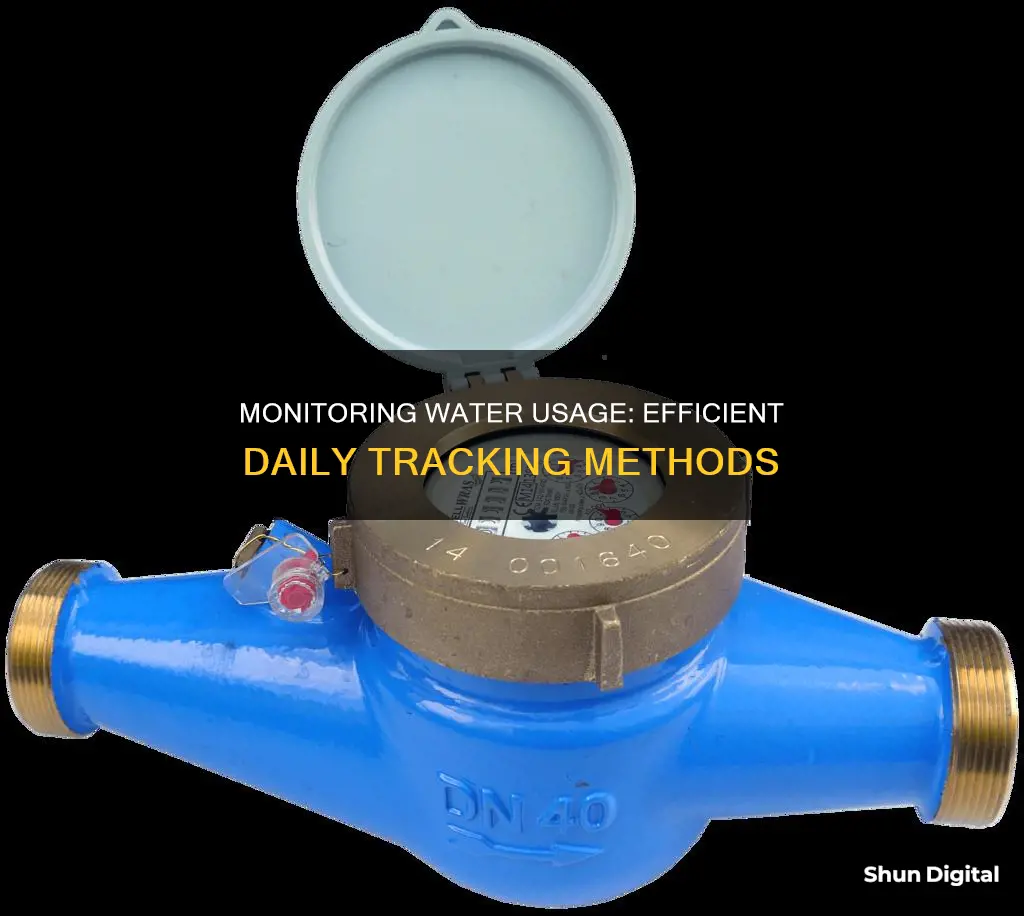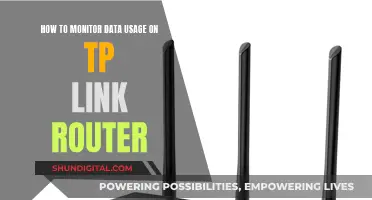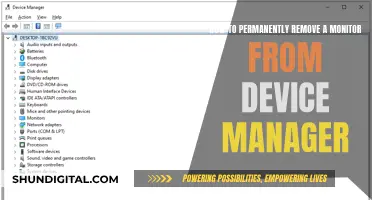
Monitoring daily water usage is an effective way to reduce water consumption and waste. Most people are unaware of how much water they use daily, and a water bill does not provide meaningful information for behavioural change. However, with the world facing increasing water scarcity, keeping track of water usage is critical. Traditionally, water monitoring has been a manual process, with mechanical water meters installed by utility companies. These have the drawback of being inaccurate and inefficient, with a lack of real-time data. Modern solutions include smart water meters, which provide real-time data and improve data precision, and water flow meters with AI-enhanced monitoring, which can suggest areas for water conservation. There are also various devices for tracking water usage from each faucet, hose, or pipe in your home, such as Flume Water Monitoring, Water Watcher, and WaterSignal. These devices can help you set water usage budgets and detect leaks.
| Characteristics | Values |
|---|---|
| Traditional Methods | Reading the mechanical water meter installed by the water utility company |
| Downsides of Traditional Methods | Inaccurate due to human error; time-consuming and labour-intensive; lack of real-time data |
| Modern Methods | Smart water meters; water flow meters with AI-enhanced monitoring; smart infrastructure |
| Benefits of Modern Methods | Real-time data; improved precision; valuable insights into usage patterns; leak detection; cost savings |
| Examples of Modern Methods | Flume Water Monitoring; WaterSignal; Water Watcher; Dropcountr |
What You'll Learn

Smart water meters
One such device is the Flume 2 Smart Home Water Monitor, which can be self-installed in under 10 minutes with no plumbing required. It uses patented technology to interpret the magnetic field of the water meter and detect usage down to the one-hundredth of a gallon. The system can identify irregular usage patterns, such as a dripping faucet or a running toilet, and promptly sends alerts through its app, helping to prevent water damage and reduce water bills.
Another option is the SmarterHomes WaterOn app, which provides precise insights into water consumption for individual apartments. It offers leak detection and notifications, as well as detailed analytics on inlet-wise consumption. This allows users to pay for their actual water usage instead of a flat rate, potentially resulting in significant cost savings.
Other smart water meters are also available on Amazon, such as the YoLink FlowSmart NSF Water Meter, which includes a smart water meter and an automatic shut-off feature for 3/4-inch pipes, and the Bluebot WiFi-Enabled Clamp-On Smart Water Meter, which offers real-time monitoring and remote access.
These smart water meters empower users to take control of their water usage, conserve water, and contribute to a more sustainable future.
Monitoring Bandwidth Usage: Managing Your Comcast Gateway
You may want to see also

Online water monitoring
New York City was the first major city to implement online water tracking, utilising digital meters that transmit data directly to utility providers and homeowners. This real-time information enables users to make more informed decisions about their water consumption and can lead to reduced usage. For example, seeing the impact of shorter showers on daily consumption can encourage more conscious water use.
Various devices and applications are available to facilitate online water monitoring. Dropcountr, for instance, connects to your local water company's database and provides real-time data on water usage. This not only helps with tracking consumption but also serves as an early warning system for potential plumbing leaks.
Another example is Flume, a smart home water monitor that offers leak detection and detailed water usage data down to the hundredth of a gallon. Flume provides indoor and outdoor water consumption history, allowing users to identify water-hogging appliances and make necessary adjustments. The device also integrates with smart home systems like Alexa and Google Home, making it easily accessible.
The market for online water monitoring solutions is growing, and similar products are becoming more widely available. These tools empower individuals to take control of their water usage, protect their homes from water damage, and contribute to environmental conservation.
Monitoring Individual Process Internet Usage: A Comprehensive Guide
You may want to see also

Wireless water monitoring
There are a variety of wireless water monitoring systems available on the market that can help you track your daily water usage. These systems typically consist of a sensor that you place on your water pipe and a wireless bridge that connects to your Wi-Fi network. Some popular options include the Flume 2 Smart Home Water Monitor and the Flo by Moen Smart Water Detector. These devices can be easily installed without any plumbing or wiring and will provide you with data on your water usage through a smartphone app.
Some wireless water monitoring systems also offer integration with smart home devices such as Alexa, Google Home, or Orbit Integration. This allows you to control your water usage and receive alerts through voice commands or smart home automation.
Overall, wireless water monitoring is a convenient and effective way to track your daily water usage, identify areas for improvement, and prevent water waste. With detailed data and leak detection capabilities, these systems can help you make informed decisions about your water consumption and contribute to water conservation efforts.
Unlocking GPU Usage Monitoring: A Unified Approach
You may want to see also

Real-time data
Water is an increasingly precious resource, and monitoring water usage is critical for efficient and sustainable management. Traditional methods of manually reading water meters are time-consuming and lack real-time data, making it challenging to promptly identify and address issues such as leaks or spikes in water usage.
However, with the advent of smart technologies, monitoring daily water usage in real-time has become more accessible and sophisticated. Here are some ways to utilise real-time data for effective water usage monitoring:
Smart Water Meters
Smart water meters are the next-generation tools that replace outdated mechanical meters. These high-tech devices transmit detailed water usage data directly to the utility provider and the consumer. Users can access this data through intuitive smartphone apps or web dashboards, allowing them to monitor their water consumption in real-time. This immediate access to data helps identify unexpected spikes in usage, suggesting potential leaks or inefficiencies. Smart water meters enable consumers to take prompt corrective action, leading to better water conservation.
Water Flow Meters with AI-Enhanced Monitoring
Water flow meters go beyond simple measurement. They collect data and send it to an AI-powered dashboard for in-depth analysis. This intelligent analysis can uncover trends, predict future usage, and suggest areas for water conservation. The dynamic response to usage patterns ensures optimal efficiency in water management. An example of this is The Water Monkey by Connected Sensors, which offers minute-by-minute water usage tracking and real-time notifications for leak detection.
Smart Infrastructure
Smart infrastructure includes technologically advanced pipes and valves that automate and optimise water flow based on real-time demand. This infrastructure can be controlled remotely, allowing for adjustments in water distribution to reduce waste and enhance efficiency. This proactive approach to water management is a significant step forward in conserving water resources.
Water Monitoring Devices
There are various devices available for tracking water usage, such as Flume, which provides detailed, down-to-the-minute water use data. It syncs with smart home devices and offers leak detection and alerts. Other devices include Dropcountr, which connects to your local water company's database, and Koolhaus faucet, a unique-looking device with an LCD screen that tracks water usage. These devices empower homeowners to monitor and reduce their water footprint.
Online and Wireless Water Monitoring
Some cities are adopting smart grids for water, allowing residents to track their water usage online in real-time. For example, New York City offers digital meters that transmit usage data to utility providers and homeowners. Additionally, Boulder, Colorado, offers wireless water monitoring through an LCD display on the fridge, providing convenient access to water consumption data. These initiatives encourage conscious water usage and conservation.
Monitoring Bandwidth Usage: Android Tips and Tricks
You may want to see also

Leak detection
Smart Water Leak Detectors:
These devices can be placed near potential leak zones, such as under sinks, water heaters, or washing machines. They typically have sensors that detect water and trigger alerts when leaks occur. Some advanced models can also integrate with smart home systems, allowing for remote notifications and automated responses. Examples include the D-Link DCH-S1621KT Whole Home Smart Wi-Fi Water Leak Sensor Kit, YoLink Water Leak Sensor, and the Kidde Water Leak + Freeze Detector.
Water Monitoring Systems:
Some cities, like New York City and Boulder, offer online water monitoring services. These systems use digital meters that transmit water usage data to utility providers and homeowners, allowing for real-time tracking of daily consumption. This helps raise awareness and encourages more conscious water usage.
Wireless Water Monitoring:
For a more convenient option, wireless water monitors are available that can be placed on the fridge or another easily accessible location. These devices provide real-time data on water consumption and allow users to track usage during specific intervals, such as a sprinkler session or a week of water conservation. However, they may not be compatible with older analog meters.
Single-Device Gadgets:
There are also gadgets designed to track water usage from each faucet, hose, or pipe in the home. For example, a high-tech garden hose nozzle can display water usage on an LCD screen, encouraging users to find ways to reduce their water consumption. Another example is the Koolhaus faucet, which tracks water usage and sends the data to a computer. Dropcountr is another similar service that connects to your local water company's database and provides real-time updates on water usage.
Smart Water Shut-Off Valves:
In addition to leak detection, smart water shut-off valves can be installed to physically shut off the water supply in case of a leak. These systems are usually more expensive and may require professional installation, but they provide an extra layer of protection against water damage.
Monitoring GPU Usage: A Comprehensive Guide to Tracking Performance
You may want to see also
Frequently asked questions
There are several ways to monitor your water usage. You can use a smart water meter, which will provide real-time data on your water consumption. You can also use a water flow meter, which will give you detailed, minute-by-minute water usage tracking. Additionally, you can try online water monitoring, wireless water monitoring, or single-device gadgets.
Monitoring your daily water usage can help you identify potential leaks or inefficiencies, and pave the way for a more sustainable and cost-effective future. It can also help you reduce your water bill and your ecological footprint.
Smart water meters are high-tech devices that transmit detailed water usage data directly to the utility provider and the consumer. Users can then monitor their water consumption in real-time through smartphone apps and web dashboards.
First, find out if smart meters are installed at your property by reaching out to your local water utility provider. If they are not already installed, ask about the process for getting a smart water meter. Once installed, your utility provider will guide you on how to access your data.
Yes, you can use a water flow meter, which is a sensor that sends data to an AI-powered dashboard for in-depth analysis. This can uncover trends, predict future usage, and suggest areas for water conservation.







